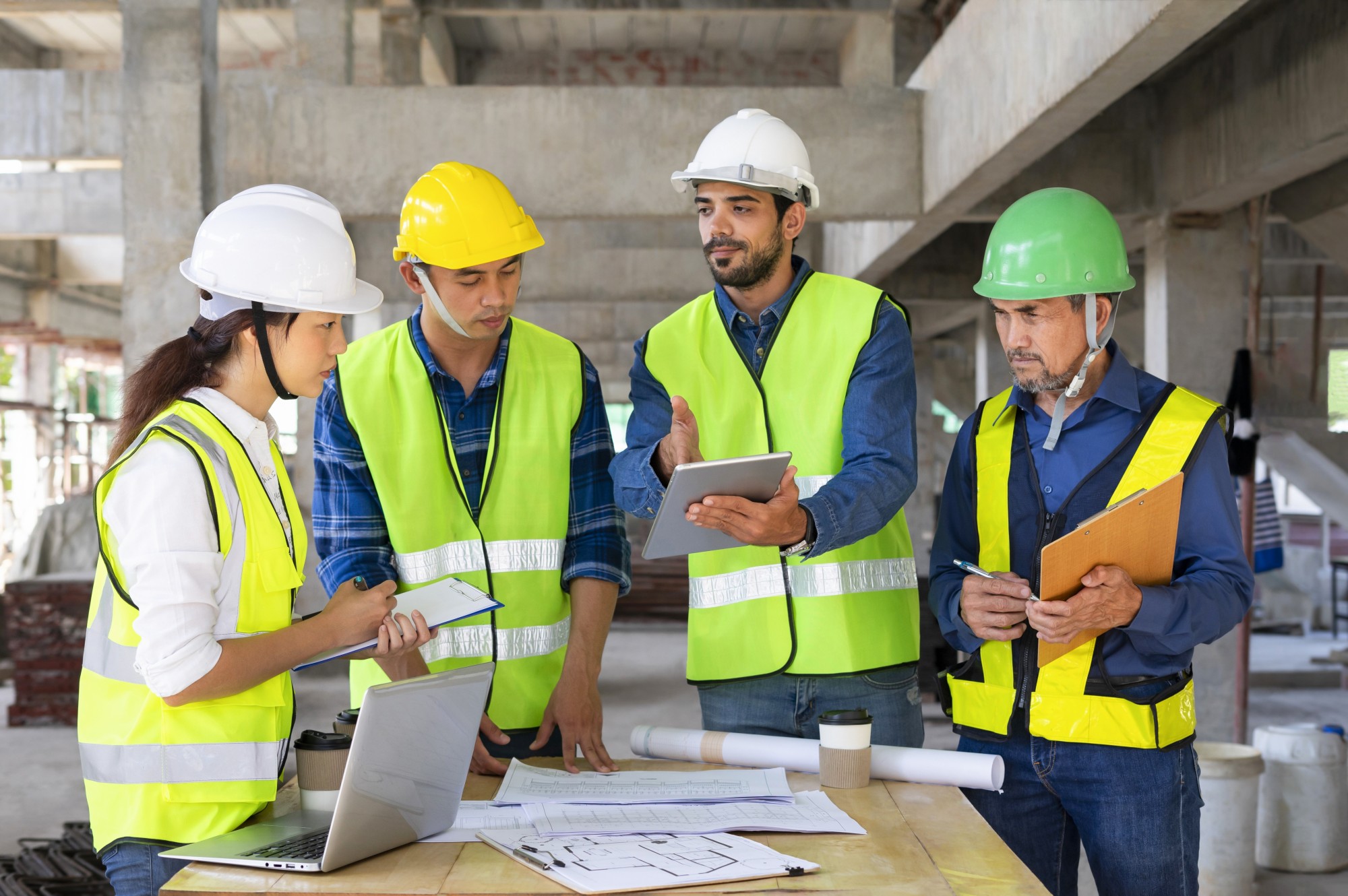Commercial, Energy Efficiency, GHG Emissions - December 9, 2024 - By Melanie Nakagawa, Microsoft
Sustainable by Design: Advancing Low-carbon Materials
As we work to advance the sustainability of our business, we are also advancing the sustainability of the datacenter infrastructure needed to deliver cloud and AI innovations. At Microsoft, we are working to decarbonize datacenters by focusing on how we design, build, and operate. To support this work, we are also investing to help scale markets for low-carbon building materials.
As a sector, building materials such as steel and concrete are some of the highest contributors to the embodied carbon of new construction, together producing an estimated 13.5% of global carbon emissions. Embodied carbon is a measure of the carbon emitted during the manufacturing, installation, maintenance, and disposal of a product or material.
Innovations in lower-carbon steel and concrete are emerging around the globe, however, these markets are still nascent and need significant investment to bring the needed supply online. Through our $1 billion Climate Innovation Fund and the collaboration of pioneering teams across datacenter engineering and procurement, we’re investing to accelerate these markets.
Novel construction materials and new methods of creating those materials show promise in sectors that are traditionally described as “hard to abate,” these are sectors we believe are necessary to abate. For example, we’re breaking ground on mass timber datacenters, investing to accelerate market availability of near-zero carbon steel, and expanding options for low-carbon concrete in construction.
Innovating with mass timber datacenter construction to reduce embodied carbon
In Virginia, we’re building our first datacenters made with superstrong, ultra-lightweight wood with the goal of reducing the embodied carbon of the buildings by 35% compared to conventional steel construction, and 65% compared to typical precast concrete.
Although this is a novel approach to datacenter construction, it’s a material we’ve used before. In 2021, when we chose cross-laminated timber (CLT) for a new building on our Silicon Valley campus, the approach brought numerous environmental benefits. With ecological design elements ranging from water reuse to clean energy production to new public pathways and restoration of native ecology, the structure earned recognition for sustainable design excellence from the American Institute of Architects.
The CLT market is well-established in Europe and rapidly growing in the United States, due to demand in the residential segment and adaptability of CLT to new designs. However, our innovative work to apply this material to building a hyperscale datacenter has required everyone to work differently, from our engineers to our procurement teams to the suppliers involved in construction.
Because CLT is prefabricated offsite, it brings additional benefits such as a faster and safer onsite installation than traditional corrugated steel. Built commonly out of spruce, pine, or fir, CLT shows remarkable structural integrity and resilience even under high temperatures, developing a char and providing insulation in scenarios where steel is likely to fail. But few datacenter building specialists have experience with the material, reducing the availability of skilled contractors, and the materials come at a premium cost in certain regions.
Throughout this project, our teams have risen to the challenge by sharing best practices across disciplines, crafting new procurement strategies, ensuring skilling pathways, and working collaboratively to validate new material combinations. Expanding the building material options for datacenter construction opens new paths toward achieving climate goals and contributes to expanding the market for sustainable building materials, including markets for regionally sourced materials and contractors working with these materials.
Accelerating market availability of near-zero carbon steel
Last year, Microsoft’s Climate Innovation Fund became an investor in Sweden’s Stegra (formerly H2 Green Steel), which is building the world’s first large-scale green steel plant in northern Sweden, achieving up to a 95% reduction in carbon emissions compared to traditional steelmaking.2 Another promising investment within our Climate Innovation Fund is Boston Metal, which uses renewable electricity and a unique process that generates oxygen instead of carbon dioxide when making steel.
In addition, Microsoft is a founding member of the Sustainable Steel Buyers Platform of RMI, a first-of-its-kind buyers’ group accelerating steel decarbonization through collaborative procurement and market action. Our engineering and procurement teams are working to incorporate low-emissions steel and repurposed steel in new construction.
Expanding options for low-carbon concrete for construction
The bulk of emissions associated with concrete come from cement production. A key ingredient of cement is limestone, which is typically heated with clay to around 2,650 degrees Fahrenheit in a coal or gas-fired kiln where it undergoes a chemical reaction called calcination that releases carbon dioxide as a byproduct. In Washington, our pilot program utilizes cement alternatives like biogenic limestone (grown in place by algae instead of quarried) and fly ash and slag, testing mixes that can lower the embodied carbon in concrete by more than 50% compared to traditional mixes.
While transitioning to low-carbon concrete production is not as capital intensive as steel manufacturing, the supply chain is fragmented and manufacturing processes can be complex—causing delays and slowing adoption of new techniques. For this reason, we’re looking to expand options for construction across the low-carbon concrete value chain.
One of the Climate Innovation Fund’s earliest investments is CarbonCure, a company deploying low-carbon concrete technologies that inject captured carbon dioxide into concrete, where the CO2 immediately mineralizes and is permanently embedded as nanosized rocks within the physical product. This not only acts as a carbon sink but also strengthens the material, enabling a reduction in the amount of carbon-intensive cement required. Another investment is Prometheus Materials, a company producing zero-carbon bio-concrete through a unique process that combines naturally occurring microalgae with other components.
With these investments, we aim to facilitate the commercialization of materials innovations that can make an outsized impact on carbon reduction for our own buildings and for built environments around the world.
This content originally appeared on the Microsoft website.
 Melanie Nakagawa is Microsoft's Chief Sustainability Officer. Melanie brings to Microsoft almost two decades of environmental sustainability experience at the nexus of policy, business and technology. She previously served as Special Assistant to the President and Senior Director for Climate and Energy on the National Security Council at the White House, one of several roles she has held in the U.S. government. At the White House, Melanie played a leadership role on international and domestic climate initiatives, as well as energy issues that included the international energy response to the war in Ukraine.
Melanie Nakagawa is Microsoft's Chief Sustainability Officer. Melanie brings to Microsoft almost two decades of environmental sustainability experience at the nexus of policy, business and technology. She previously served as Special Assistant to the President and Senior Director for Climate and Energy on the National Security Council at the White House, one of several roles she has held in the U.S. government. At the White House, Melanie played a leadership role on international and domestic climate initiatives, as well as energy issues that included the international energy response to the war in Ukraine.
To learn more, visit the Microsoft Sustainability website.
Read These Related Articles:
- Plugged In: Exploring Energy with Constellation | Episode 2 - On the Frontier of Carbon-Free Resources with Microsoft
- Microsoft Builds Lower-Emission Data Centers Using Wood
- Microsoft Signs for Ocean Carbon Removal
- Microsoft Signs for Carbon Removal
- Microsoft Buys ERW Carbon Removal Credits
Share this valuable information with your colleagues using the buttons below:
« Back to NewsStay Up-To-Date












